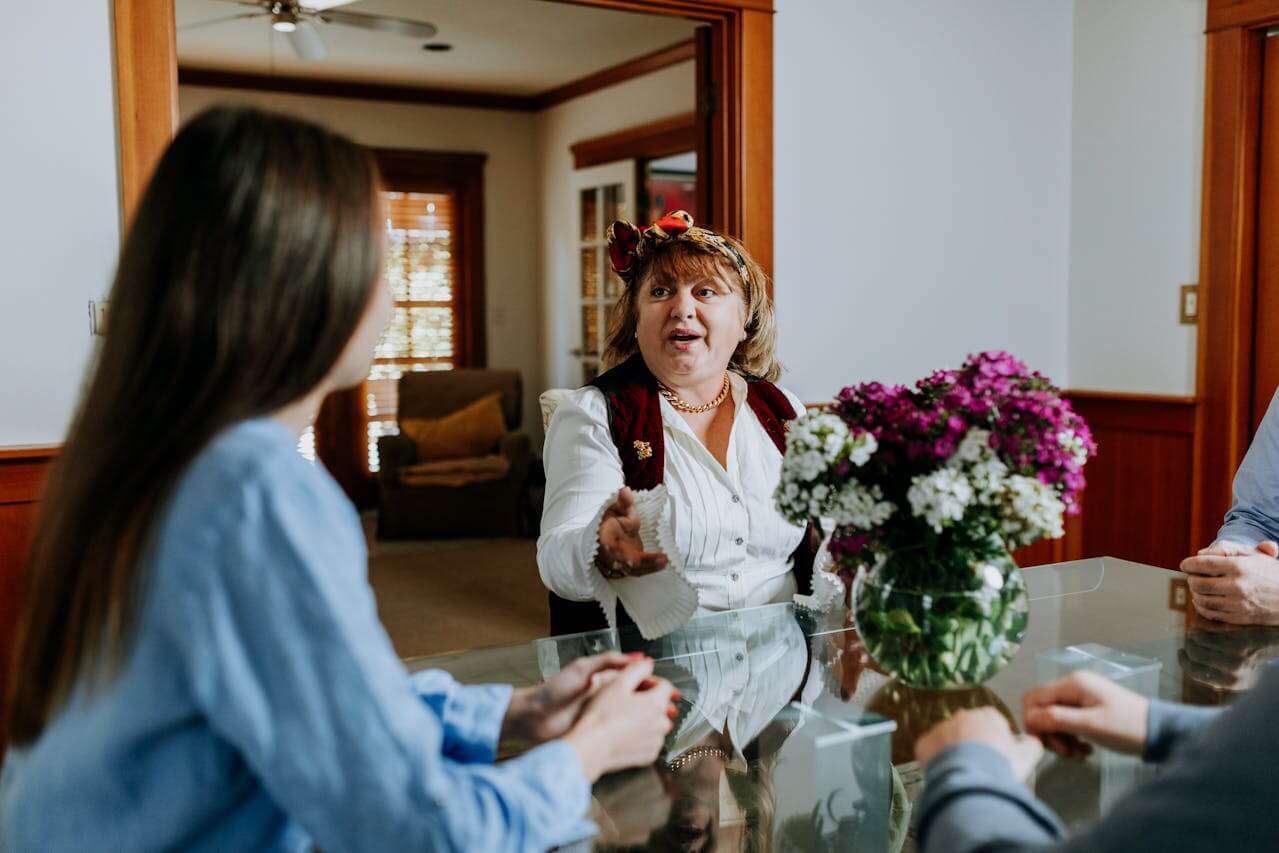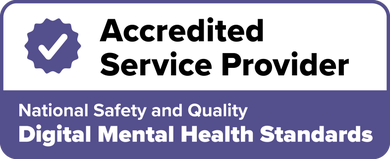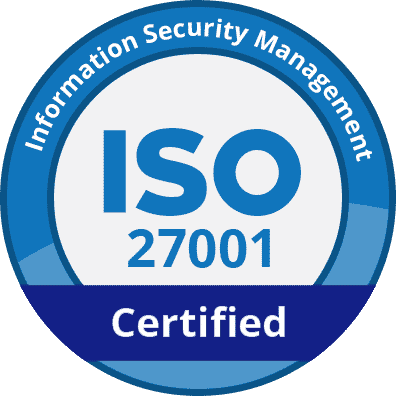Enmeshment in relationships: How to break free?
In a Nutshell
Enmeshment occurs when emotional boundaries become blurred, often leaving people feeling overly responsible for others' needs or happiness.
These dynamics can contribute to stress, anxiety, depression, resentment, and ongoing mental load, particularly in caregiving relationships.
Recovery involves setting clear boundaries, reconnecting with personal identity, and seeking support when emotional autonomy feels out of reach.
Some relationships feel intensely close, but not in a comforting way. Instead, there may be pressure to be emotionally available all the time, to carry someone else's feelings, or to adjust decisions to avoid upsetting others.
These patterns can become so embedded that they feel normal, even when they leave someone emotionally drained or unsure where they end and the other person begins.
This is often the experience of enmeshment. It doesn't start with bad intentions, but it can slowly blur personal boundaries, compromise mental health, and make it difficult to return to healthier dynamics.
What is enmeshment? How does it happen?
Enmeshment is a relational pattern where one person becomes deeply entangled in another’s emotional life, often to the point where individual needs, preferences, and identities take a back seat.
It’s not closeness that causes harm, but a lack of psychological space between individuals to think, feel, or make choices independently.
Enmeshment in families
In family settings, enmeshment can look like a parent oversharing emotional burdens with a child or expecting emotional caretaking in return. An adult child might feel obligated to prioritise a parent's emotional state, career preferences, or values over their own, out of guilt or fear of disapproval.
Enmeshment in romantic & platonic relationships
In friendships or romantic relationships, enmeshment often shows up as emotional overdependence. One person's wellbeing might hinge on the other's mood or decisions. Interests, routines, and even life choices may begin to revolve around preserving the emotional balance of the relationship, sometimes at the expense of autonomy.
How it develops
Enmeshment can take root in a variety of ways:
Unclear emotional boundaries: Some people grow up without being shown how to separate their feelings or responsibilities from others.
Caregiving roles: Carers and parents, especially mothers, often become so attuned to others’ emotions that they begin to ignore or suppress their own.
Family patterns: Intergenerational dynamics may normalise over-involvement and discourage independence.
Life transitions: Becoming a parent or caring for an ageing family member can heighten emotional merging, particularly if support systems are lacking.
Cultural and social norms: Certain cultural or family expectations may promote emotional self-sacrifice or discourage individual expression.
Is it linked to your mental health?
Yes. Enmeshment often underpins many mental health challenges, particularly those related to burnout, anxiety, emotional fatigue, and identity loss.
Burnout, anxiety, and the stress response
When someone is constantly prioritising others' needs without space for recovery or personal reflection, emotional exhaustion is likely to follow. This kind of chronic over-responsibility is common among parents, carers, and people managing heavy emotional or mental loads.
Without intervention, it can lead to persistent anxiety, disrupted stress responses, and eventually, burnout.
Postpartum depression and maternal mental health
Enmeshment can compound maternal mental health challenges, especially in the months after giving birth. New mothers might feel emotionally isolated, overwhelmed by expectations, or burdened by guilt when trying to meet every need without support.
Identity loss and complicated grief
Many people caught in enmeshed relationships report feeling like they have lost touch with who they are. This can lead to a deep but often unspoken grief.
As people become aware of how long they have centred their lives around someone else, emotions like sadness, resentment, or regret can emerge.
Related: Dealing with loss and grief
Can you break free from enmeshment?
Yes, but like many ingrained patterns, it often requires intention, reflection, and support. The six strategies below offer a place to start.
1. Recognise the signs
Understanding the pattern is an essential first step. Here are some common indicators:
Guilt or anxiety when setting limits
Feeling responsible for someone else's feelings or choices
Discomfort with expressing disagreement
A sense of identity that is strongly tied to another person’s approval or needs
These signs may point to a relational dynamic where individuality has been compromised.
2. Identify boundary gaps
Reflect on where emotional boundaries are unclear or regularly crossed. Some questions to consider are:
Which relationships feel emotionally heavy or draining?
Where do I feel pressure to manage someone else’s emotions?
Are there roles I’ve taken on that I didn’t choose willingly?
Being honest about these patterns helps clarify where change is needed.
3. Reconnect with your identity
Enmeshment often disconnects people from their inner world. Reconnecting can take some time, but here are how to start:
Exploring new or forgotten interests
Ask yourself what matters to you, then make time for them
Spend time alone, not as isolation but as restoration
Rather than reinventing yourself, this is about reclaiming the parts that have been quieted when you deprioritised yourself.
4. Set clear and kind boundaries
Boundaries are not about distancing yourself from others but about defining where your responsibilities end and someone else’s begins. Here are a few examples:
“I’m not able to talk right now, but I’ll call you tomorrow.”
“That’s a decision I need to make on my own.”
“I care about you, but I can’t take on that responsibility.”
Start small if needed. Boundaries often feel unfamiliar at first but become easier with practice.
5. Find support beyond the enmeshed system
It can be hard to change patterns from within the relationship that created them. That’s why it’s ideal to seek out:
A therapist trained in family dynamics or boundary work
Support groups for carers, new parents, or adult children
Friendships that encourage mutual respect and independence
Having a place where your emotional needs are seen and validated is vital.
6. Monitor your emotional load
Even after making changes, old habits can return under stress. Pay attention to the following, and be kind to yourself when they surface:
Emotional and physical exhaustion
Resentment, irritability, or guilt
Feeling like you are disappearing again
Prioritise rest and supportive routines, especially during busy or emotionally intense periods.
Related: How to rebuild your self-respect?
Final thoughts
Enmeshment isn’t always obvious. It can look like love, loyalty, or a deep connection, and yet it quietly limits your emotional freedom and wellbeing.
Recognising the pattern is a powerful first step. With self-awareness, supportive boundaries, and therapeutic guidance, it’s possible to change some relational dynamics and move toward healthier patterns that honour both the connection and your individuality.
Essential Reading
Frequently Asked Questions
Closeness respects each person's autonomy. Enmeshment often erodes that autonomy by creating emotional over-reliance or blurred identity.
Yes. Over time, enmeshment can contribute to anxiety, burnout, emotional exhaustion, and difficulty forming healthy relationships.
Yes, but they need to be consistent and supported by a strong conviction. Boundaries help create space for healthier communication and greater personal freedom, though the process can take time.
Yes, therapy can be a valuable space to explore enmeshed patterns safely. A therapist can help unpack complex emotional dynamics, build boundaries, and support your journey back to yourself.
Recommended Therapists Available Now
QLD
Psychologist
If you're feeling overwhelmed, anxious, stuck in your head, or disconnected from yourself, you're not alone. I'm Casey Barnard, a Psychologist and Health Coach who helps ...More
NT
Psychologist
Hi, Im Sean, a registered psychologist who helps adults slow down, make sense of their stress and reconnect with who they are through calm, honest, down-to-earth therapy....More
VIC
Clinical Psychologist
I am a Clinical Psychologist with a Masters qualification and around six years of experience working predominantly in the Victorian public mental health system. My work h...More








